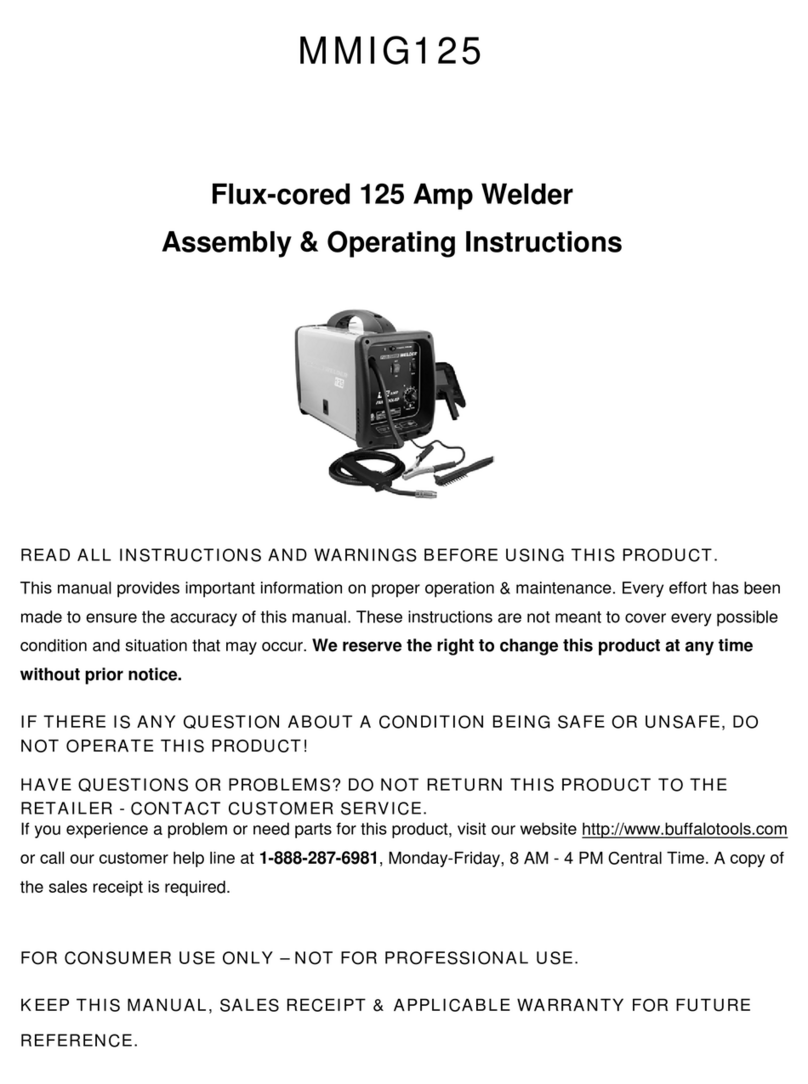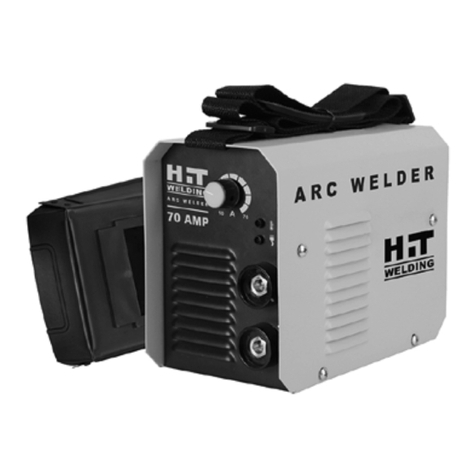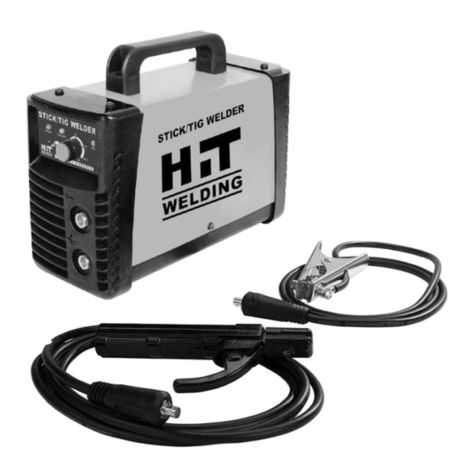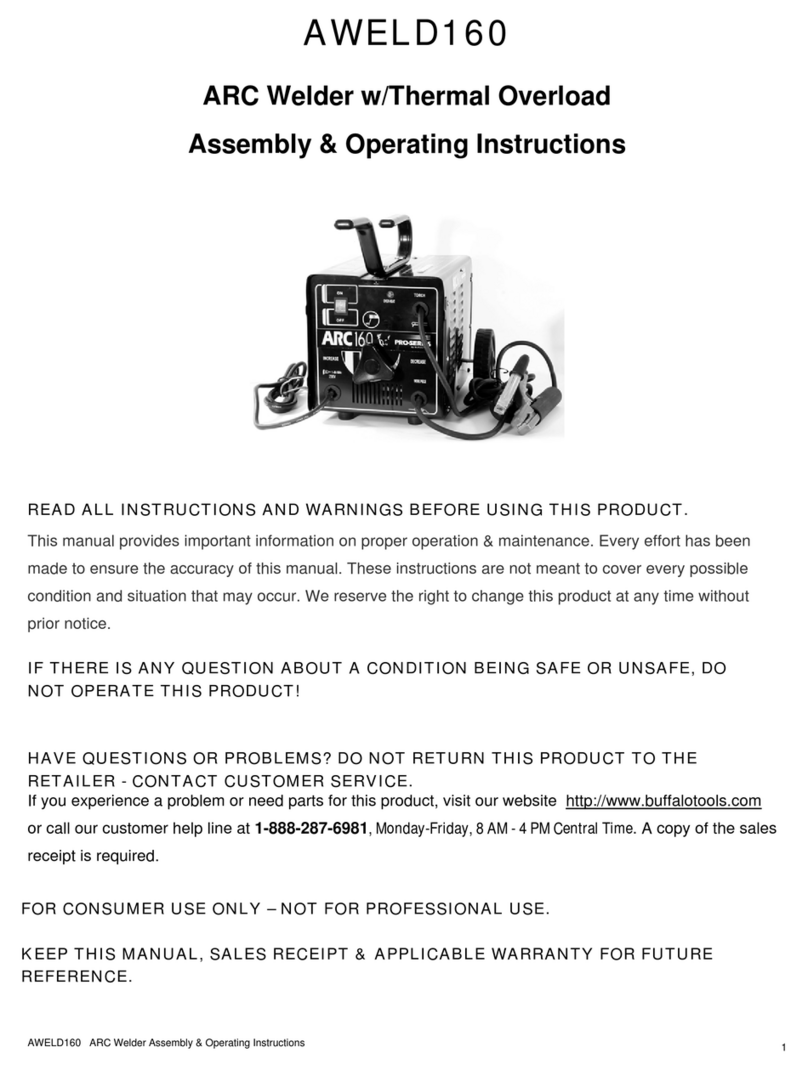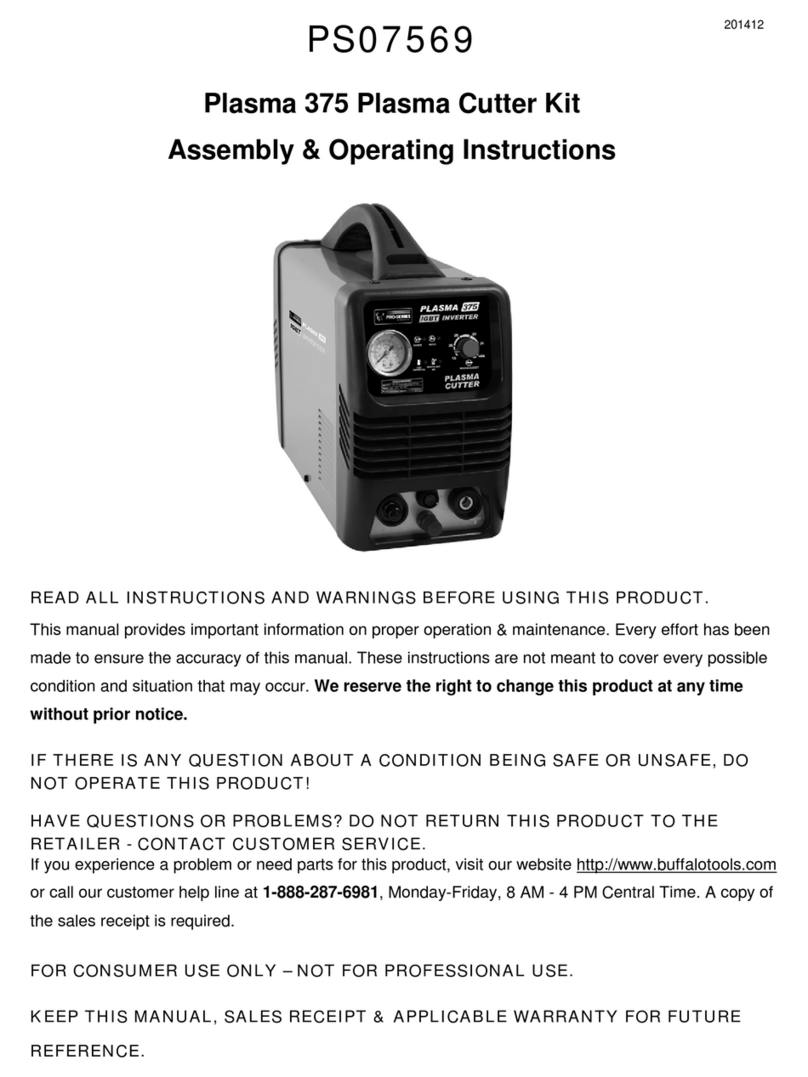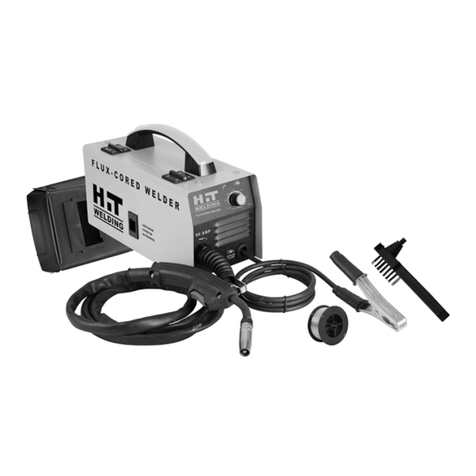SAFETY
Welding is dangerous, and may cause damage to you and others, so wear protection when
cutting.
Professional training is needed before operating the machine.
!Always wear ANSI-approved eyewear and protective equipment while operating this unit.
!The operator must be qualified personnel with a valid "metal welding/cutting (OFC)
operations" operation certificate.
!Cut off power before maintenance or repair.
WARNING: Electric shock—may lead to serious injury or even death.
!Install earth device according to the application criteria.
!Never touch the live parts when skin bared or wearing wet gloves/clothes.
!Make sure that you are insulated from the ground and workpiece.
!Make sure that your working position is safe.
WARNING: Smoke & gas may be harmful to health.
!Keep the head away from smoke and gas to avoid inhalation of exhaust gas from welding.
!Keep the working environment in good ventilation, use exhaust or ventilation equipment when
welding.
Arc radiation—may damage eyes or burn skin.
!Wear suitable cutting masks and protective clothing to protect your eyes and body.
!Use suitable masks or screens to protect spectators from harm.
Improper operation may cause fire or explosion.
!Welding sparks may result in a fire, so please make sure no combustible materials nearby
and pay attention to fire hazard.
!Have a fire extinguisher nearby, and have a trained person to use it.
WARNING: Hot workpiece may cause severe scalding.
!Do not contact hot workpiece with bare hands.
!Cooling is needed during continuous use of the welding torch.
Magnetic fields affect cardiac pacemaker.
!Pacemaker users should be away from the welding spot before medical consultation.
Moving parts may lead to personal injury.
!Keep yourself away from moving parts such as fan.
!All doors, panels, covers and other protective devices should be closed during operation.
